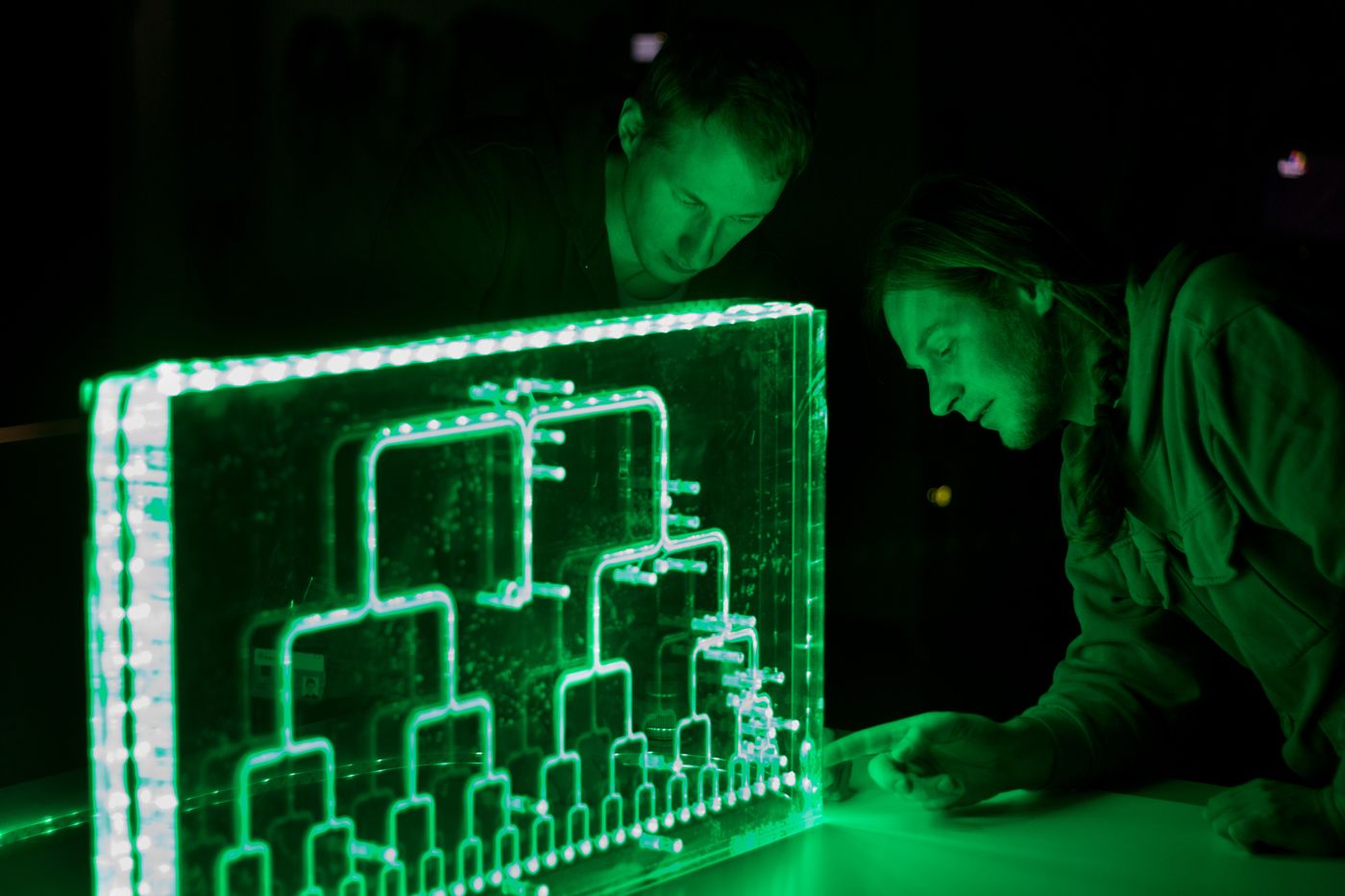Press Release #21
Heat pumps and chillers: highly efficient components of our future energy supply – Fraunhofer ISE opens new test and development center
The Fraunhofer Institute for Solar Energy Systems ISE has opened its new test and development center for heat pumps and chillers in Freiburg, thus doing justice to the central importance of these technologies in the energy transition. The Institute offers industry completely new possibilities to have their components, devices and entire systems developed and tested to ensure highly efficient heating and cooling performance.
“When we talk about the energy transition, most people think about electricity – yet heating and cooling in buildings account for over 40 percent of the final energy consumption in Germany,” explains Ivan Malenković, head of ServiceLab Heat Pumps and Chillers at Fraunhofer ISE. “Highly efficient heat pumps and chillers can drastically reduce energy consumption and therefore play a central role in achieving a sustainable energy system.”
In addition to electricity, heat pumps can also be powered by natural gas, biogas and gas generated from renewable electricity (power-to-gas). Even chillers can be fueled by high-temperature heat, such as waste heat. With the new test and development center, the institute can provide the industry with quick and comprehensive support for developing all kinds of new devices.
In the past, heat pump developments, for example, were slowed down by lengthy trials that required a considerable amount of time to cover all relevant operating conditions. The new center has been equipped with measuring and conditioning technology that permits hardware-in-the-loop measurements (HIL). This allows researchers to simulate the climatic conditions, construction characteristics and heating loads in Scandinavia, for example, using modular test groups and computer simulations, which means that test subjects can complete a virtual year in just a few days. To make this possible, researchers at Fraunhofer ISE have designed their equipment to be able to precisely depict and measure highly dynamic processes in components and systems, such as temperature jumps in the hydraulics of heat pumps when switching modes from heating to domestic hot water.
“Dynamic measurements and integrating test devices in real-time simulations provide researchers and industry players with a better understanding of complex control processes and interdependencies, enabling them to develop products more quickly and cheaply,” says Ivan Malenković. ISE researchers at the new center are also working on new test methods that accommodate for this dynamic range.
A further area of focus is on new EU regulations, such as the F-gas Regulation, which strengthens existing conditions of use for conventional refrigerants for heat pumps, for example by reducing the quantities available on the market step by step. As a result, natural refrigerants like propane and ammonia, which have no, or a 1,000 times lower, global warming potential (GWP), are taking on increasing importance. Many new refrigerants are subject to special safety precautions during use, for example due to flammability. The new test and development center features integrated safety standards and the technical facilities needed to develop equipment using the refrigerants of the future.
The example of refrigerants illustrates the benefits of incorporating measurements into other research activities. In the Green Heat Pump project, for example, a bionic refrigerant distributor with ducting modeled on natural channel formation considerably reduces the quantities of refrigerants required. The project is being funded by the EU, which means that all manufacturers can profit from this innovation.
A large part of the center is occupied by a calorimetric, dual-sided environmental test chamber in which test devices can be measured using up to 2 x 50 kilowatts of heating or cooling output. The chamber contains gas connections, air ducts and flues in order to be equipped for all modes of operation. By calibrating the chamber before tests are carried out, the exact thermal losses can be measured in order to set up a precise energy balance.
The basic principle of heat pumps is to make use of environmental heat and thus save energy. An electrical heat pump with a seasonal performance factor of 3 converts one part of electricity into three parts heat, of which two parts are generated from its surroundings. Heat pumps are an ideal heating technology for existing buildings renovated to become more energy efficient as well as for modern new buildings. In future smart grids, electrical heat pumps – especially in combination with heat storage tanks and the use of building thermal mass – will also be able to absorb excess power from fluctuating energy sources and thus optimize the use of renewable energy.
Fraunhofer ISE has been supporting the development of heat pumps and chillers for over 20 years. Close collaboration with the institute’s other research departments, such as sorption and storage materials or smart grids, is a frequent source for innovative approaches and product ideas.
Last modified:
